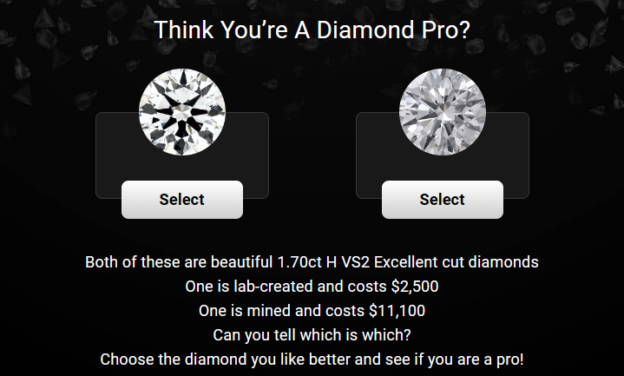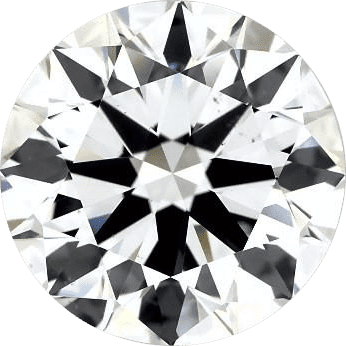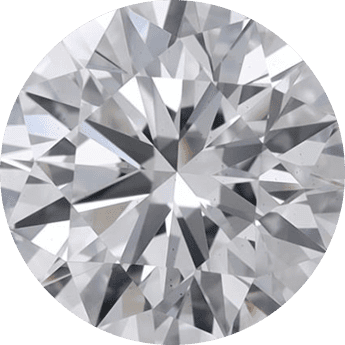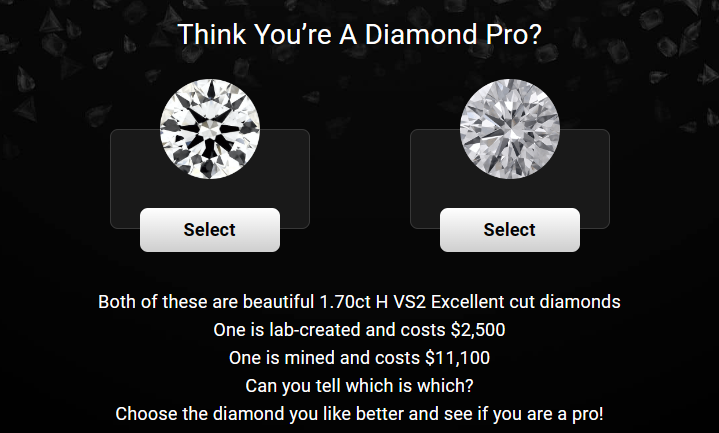How to decide whether a natural or lab-created diamond is best for you
Are lab-grown diamonds real? Yes, lab-grown diamonds are real! They are genuine diamonds, but they have distinct origins and characteristics. They are created in controlled environments, replicating the conditions under which natural diamonds form. Lab grown diamonds offer identical beauty and physical properties to natural, mined diamonds but come at a reduced cost.
Lab-grown diamonds vs. natural diamonds: which is the right choice for you? Lab grown diamonds are cheaper. On the flip side, natural diamonds formed over billions of years carry a unique allure and history. When choosing between the two, consider factors like value, ethics, and personal preferences to make an informed decision.
Here’s what we’ll cover on this page:
Should you buy a lab diamond or a natural diamond?
Are lab-grown diamonds cheaper than natural diamonds?
Are lab-grown diamonds a better value than natural diamonds?
Are lab-grown diamonds a more ethical purchase than natural diamonds?
Do lab-grown diamonds look like natural diamonds?
Are lab-grown diamonds real?
FAQs
Bottom line recommendation
Lab diamonds are different from natural diamonds in that they are artificially created; instead of being naturally produced in the earth, like regular diamonds, they are man-made in a laboratory.
Fundamentally, this is the only difference. Lab diamonds look and feel just like natural diamonds. Industry experts and leading scientific publications, like Science Focus, agree. They’re available in all kinds of shapes and sizes, and if you had a lab diamond and a natural diamond in front of you, it would be virtually impossible to tell the difference. They even have almost identical chemical structures.
Why you should trust us
Despite all the similarities, there is a growing gulf in price, resale value and overall desirability for lab-created diamonds vs. natural diamonds.
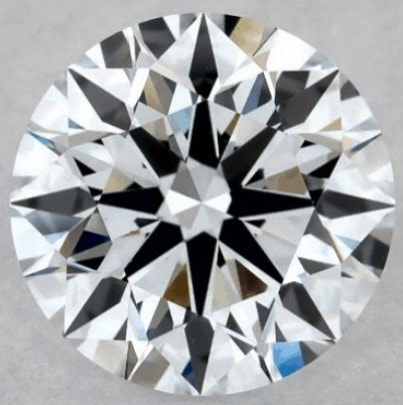
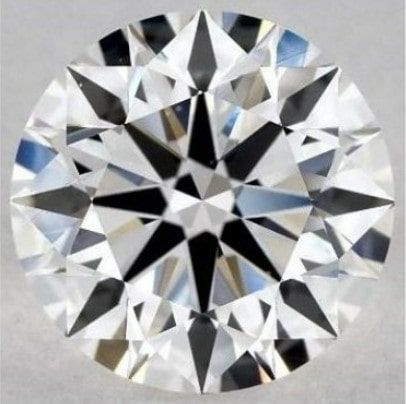
The two pictures above are both G color VS2 clarity, similar carat weight and cut. If each were in front of you, it would be nearly impossible to tell, but one is a natural diamond, and one was grown in a lab.
Pro Tip: If you are considering the pros and cons of lab-grown vs natural diamonds, James Allen has doubled down on the value offered by lab created diamonds. James Allen is offering 10% of the already fantastic pricing of their lab grown diamonds.
Natural diamonds are created by nature, as a result of intense heat and pressure, formed over the course of billions of years. Lab-grown diamonds are created in a laboratory, often produced in just a matter of weeks. There is a tiny chemical difference between the two, as natural diamonds often contain a very small amount of nitrogen, while synthetic diamonds do not. This is the only inherent difference though – even the US Federal Trade Commission, or FTC, classes man-made diamonds as “real” diamonds, due to the gem’s carbon-based chemical makeup.
So how can you tell the difference between a lab diamond and a natural diamond?
There is no visible difference between the two. Even a professional gemologist will need specialized equipment to tell which is which. With magnification, a professional will be able to make out small contrasts in the inclusions of lab-grown vs. mined diamonds.
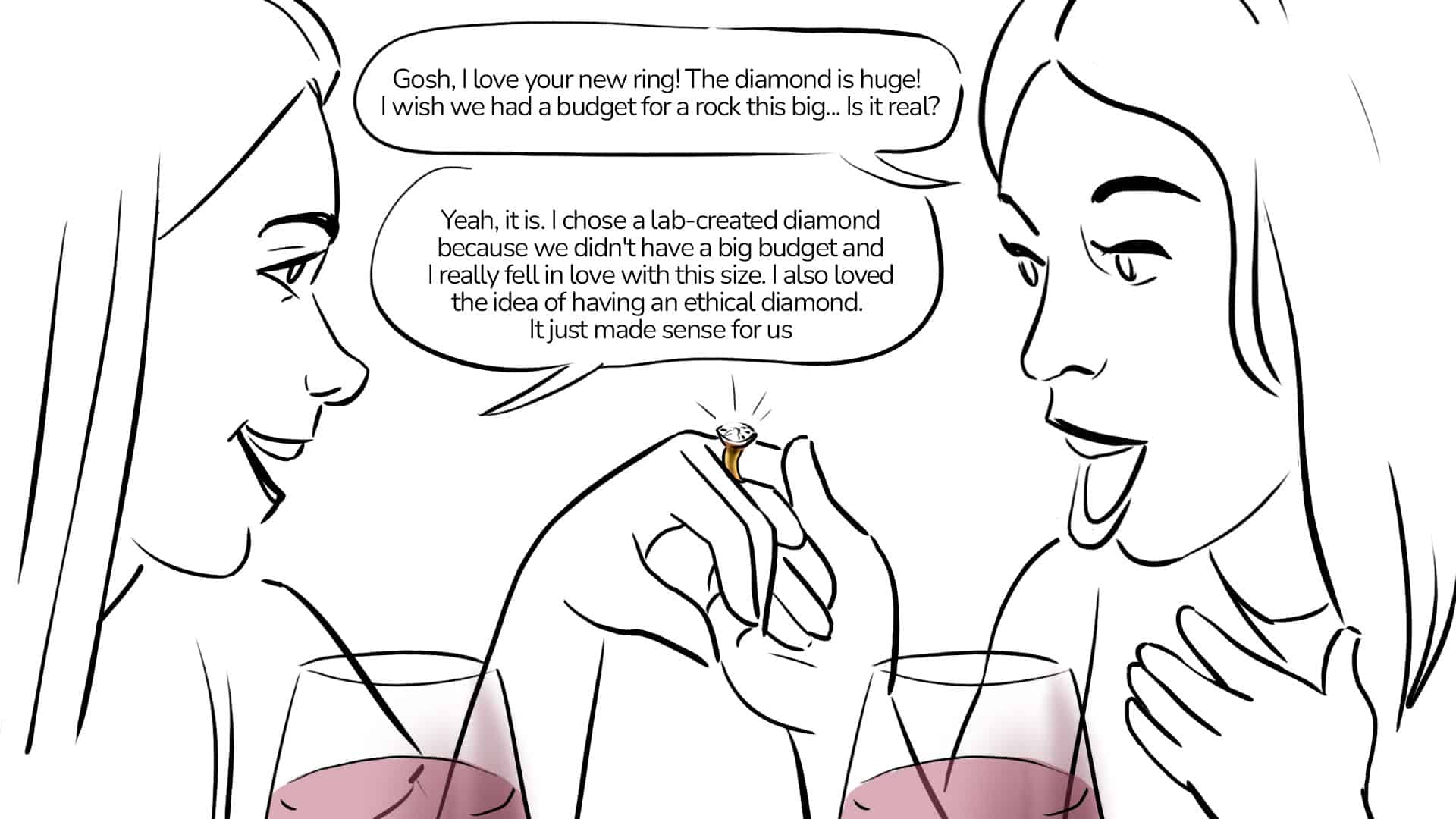
The best way to tell the difference is to check the diamond’s certification. Jewelers must declare whether a diamond is naturally or synthetically created, so as long as you shop with a reputable store, you will always have this information available. Pay attention to this information, as it will have a significant impact on the price and resale value of your diamond.
“A lab diamond doesn’t say I love you any less than a mined diamond says I love you.” Beryl Raff, Former CEO of Helzberg Diamonds as reported in JCK Online.
Should You Buy a Lab Diamond or a Natural Diamond?
If there is no visible difference between a lab-grown diamond and a natural diamond, which one should you go for?
It’s hard to answer this question for everyone, as different buyers have different priorities. If appearance is literally the only factor that matters to you, then it doesn’t matter if a diamond is man-made or natural. No one will notice unless you tell them. The growing popularity of them shows it well.
There are, however, some big differences, which should cause you to think twice before making your decision.
Price
The cost of lab diamonds is still in a constant flux. Just 4-5 years ago, we found lab diamonds to be on average 23-25% more expensive than natural diamonds. Today, lab diamonds are coming in significantly cheaper than natural diamonds, 75% cheaper, or even more in some cases. Take a look at this 3.00ct diamond from Brilliant Earth. It is gorgeous and will look the same as a natural diamond that will cost you four times the price.
The difference is due to supply. The natural diamond supply is limited, due to the billions of years it takes for nature to create a diamond. Yet with synthetic diamonds, there is no cap on supply, which drives the price lower and lower as supply goes up.
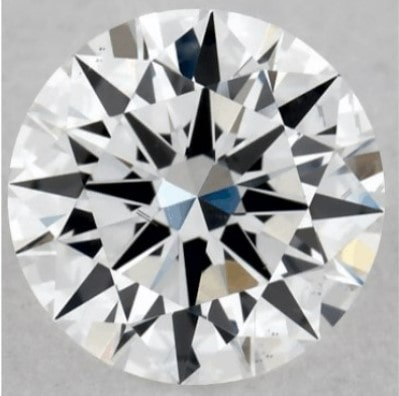
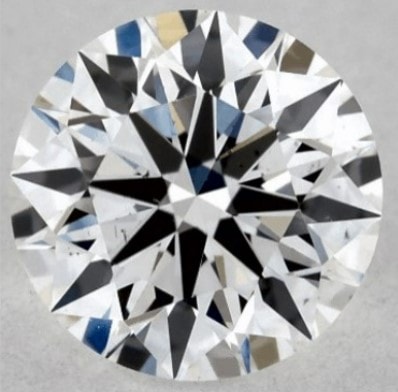
The image above is another example of how similar lab diamonds and natural diamonds look. It’s hard to tell the 0.58ct E/VS2 lab-created diamond on the left and the 0.51ct E/VS2 natural diamond on the right apart.
The price of lab-grown diamonds is falling at an alarming rate, and shows no signs of stopping or reversing. Take this into account when making your purchase – the same lab diamond bought for $1,000 today may be priced at a fraction of that amount in just one or two years.
Here are some lab-grown diamonds from James Allen:
-
0.59ct E VS2 Lab Grown Round Diamond
MORE DETAILS
-
0.80ct E VS2 Lab Grown Round Diamond
MORE DETAILS
-
0.80ct E VS2 Lab Grown Round Diamond
MORE DETAILS
LOAD MORE
Value
The difference in resale value between natural and synthetic diamonds is even greater than the difference in price. While natural diamonds often retain around 50% of their initial value, lab-created diamonds are almost impossible to resell without accepting pennies on the dollar. You lose a massive percentage of its value the moment you make the purchase.
We also must consider how the cost of real diamonds vs. synthetic diamonds changes over time. With lab-created diamonds dropping in price, and natural diamonds historically rising in value, your synthetic diamond will almost certainly be worth less than a natural one of similar grade, even before considering the difference in resale value.
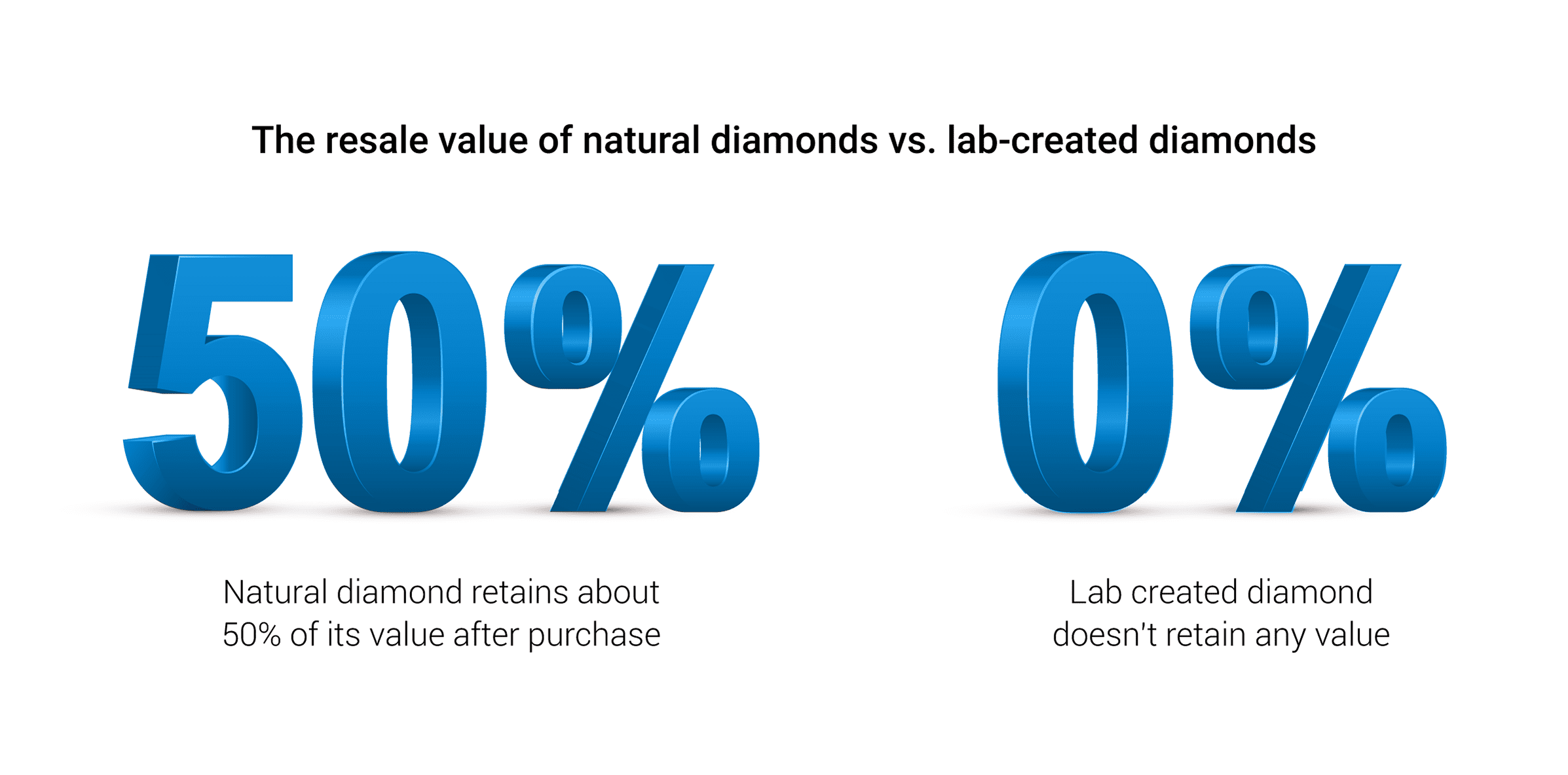
Sustainability
Some may have concerns over the environmental and humanitarian repercussions of natural diamond mining processes.
That’s not to say that natural diamonds are necessarily unethical. But it stands to reason that man-made diamonds offer more in the way of long-term sustainability than those pulled from the earth.
There is some contention over this issue. In fact, the FTC warned a number of jewelers about making unsubstantiated claims of their jewelry being sustainable or eco-friendly.
A report from the Diamond Producers Association claims that natural diamonds are, in fact, better for the environment than synthetic diamonds, due to the carbon-intensive process of producing lab diamonds.
All in all, it appears there is not a consensus just yet on whether lab diamonds are actually a more sustainable option.
See this article for a comprehensive guide on ethical issues in diamond buying.
Look
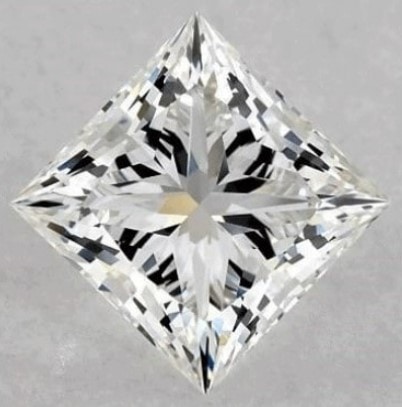
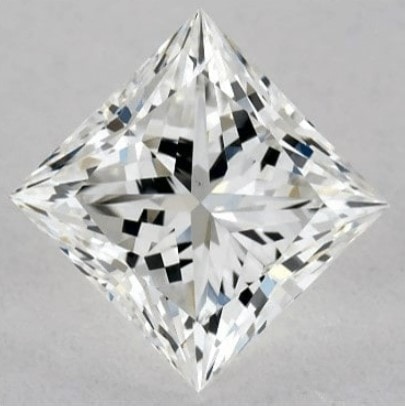
1.01ct F/VS1 lab-created princess cut (on the left) vs. 1.00ct F/VS1 natural princess cut (on the right)
Lab diamonds and mined diamonds are, for the most part, identical to the naked eye. If you buy a ring with a lab-created diamond, it’s just about certain that no one will be able to notice, unless you tell them.
There can be some very small inclusions on lab diamonds that aren’t present in natural diamonds. It’s very rare for these inclusions to be visible unless using magnification tools.
In just about every case, a lab diamond will have the same brilliance and shine as a natural one, so if you’re primarily looking for a diamond that looks beautiful, lab diamonds can present a low-cost option without settling for a lower grade.
According to a CNN report based on July 2022 data “the number of engagement rings sold that featured a manufactured diamond jumped 52% compared to last year”
The Verdict: Which Diamond Should You Buy?
While diamonds generally should not be seen as an investment, there is also sense in purchasing a piece of jewelry that is likely to retain its value over the years. If this is a priority to you, opt for natural diamonds.
Don’t discount synthetic diamonds as an option. Couples who are strapped for cash may be able to find a beautiful ring that would otherwise be far out of their price range by going with a lab-created diamond. But just be aware that you may see the exact same diamond on sale for a fraction of the price in the future.
Pro Tip: When purchasing a lab-grown diamond, follow the same advice regarding the 4C’s we use. If you go overboard focusing on the best quality, you will be sacrificing on size too much. Once set in a ring, you can’t tell the difference in color/clarity between this 1.61ct diamond from Blue Nile and this 2.06ct stunner from gemstonestudio. But you will certainly notice the size difference.
Are Lab-Grown Diamond Real? Lab Diamond vs Cubic Zirconia vs Moissanite
A lot of people refer to lab diamonds as “fake” diamonds, but this is not accurate. The carbon-based chemical composition of lab diamonds means they are in fact “real” diamonds – unlike cubic zirconia or moissanite.
These diamond simulants are also lab-created but are not composed of carbon atoms, and therefore are not real diamonds.
Unlike lab diamonds vs. natural diamonds, which are inherently identical in look, feel and hardness, there is a noticeable dropoff from a lab-created diamond to a simulant like cubic zirconia or moissanite.
Simulants do not have the same brilliance and sparkle as real diamonds. The refractive index of cubic zirconia is lower than a diamond, 2.2 vs. 2.42. Moissanite actually has a higher refractive index (2.65 – 2.69). The higher refractive index of moissanite means it gives off a vibrant colored reflection, in dazzling colors that is a little too much for some people.
There is also a difference in hardness. Diamonds score a perfect 10 on the Mohs scale of hardness, while moissanite is between 9-9.5, and cubic zirconia 8.
Like lab diamonds, both cubic zirconia and moissanite don’t carry much value and make for poor investments. However, there is a drop off in quality between lab diamonds and diamond simulants, as you are not actually getting a real diamond.
